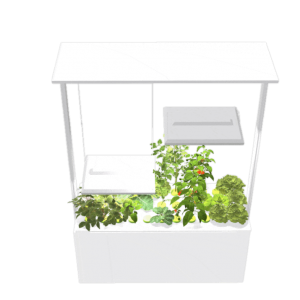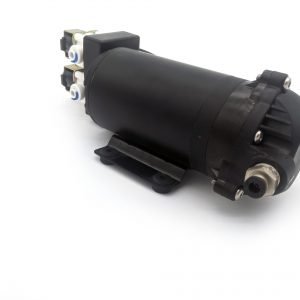
‘Good things come in small packages.’
Whoever said this quote might not have been talking about indoor micro gardening, but we’re going to assume they did.
Micro gardening makes it possible for city dwellers to grow their own fresh and natural produce – something typically enjoyed by farmers living in far-off areas.
But to make the most of the farming solution, it’s essential to know as much as you can about it.
So, if you’d like to learn what micro gardening is and how you can capitalize on its benefits, continue reading our article, where we discuss that and much more.
What Is Micro Gardening?
Also referred to as urban micro container gardening, indoor micro gardening is the practice of growing plants in small spaces, such as
- Balconies
- Patios
- Rooftops
- Porches
- Small yards
Generally, these areas are not spacious enough to grow a full-fledged garden. But micro gardening solves that problem by allowing you to cultivate plants in incredibly tiny places, even your kitchen counters.
What Do I Need to Create an Indoor Micro Garden?
One of the best things about an indoor micro garden is that you don’t necessarily have to be experienced to get started. You just need a few things, including an empty space, high-quality seeds, containers, and proper lighting.
Which Plants Are Best Suited to Grow in A Micro Garden?
Most people assume that since a micro garden isn’t big, it won’t produce a high yield. However, that’s simply not true. You can grow plenty of healthy vegetables, including:
- Tomatoes
- Basil
- Kale
- Cucumbers
- Squash
- Mustard
- Peas
- Lettuce
Over the past few years, growing microgreens in small spaces has become a common practice. They’re harvested and eaten at an immature size, when only a few inches tall.
Most home growers add microgreens to soups, salads, and other dishes to enhance the taste.
Tips To Grow Microgreens
Packed with nutrition and delicious to a T, microgreens make gardening simple and easy. However, you have to follow a few tips to get the job done right.
Here’s what they are:
- Sow Seeds at The Right Time
Whether you live in a hot or cold climate, you can grow microgreens any time throughout the year – well, some of them, at least. The key is to get the timing right.
For instance, some microgreens need warmth for germination while others require cold temperatures. So, it’s best to conduct some research about the plants you’re going to grow.
- Pay Attention to Drainage
While choosing a container to place your microgreens in, make sure it has at least a few holes for drainage purposes. If it doesn’t, you can create holes in the box yourself with the help of a nail.
We’re saying this because the excess water can choke your plants without a proper drainage system. Additionally, overwatering your plants can cause their roots to rot.
- Observe Your Microgreens Everyday
Micro gardening is more than just sowing seeds and watering them. You have to observe them every day to ensure they receive enough light and air circulation.
If they do not look healthy, check immediately for mold infestation. The good news is, you can remove mold by simply wiping it off the leaves with the help of a paper towel.
- Harvest When They’re Ready
Depending on the microgreens you’ve planted, they’ll be ready to harvest between 10-14 days. Cut them just above the soil line with the help of scissors.
If you notice any seeds that didn’t germinate, don’t throw them. Instead, place them in a fresh batch of soil and repeat the process.
Before We Part Ways
Enjoy a variety of fresh produce, add exciting flavors to the dishes you prepare, and adopt a greener lifestyle – all possible with an indoor micro garden.
So, what are you waiting for? Plant your heart out!





